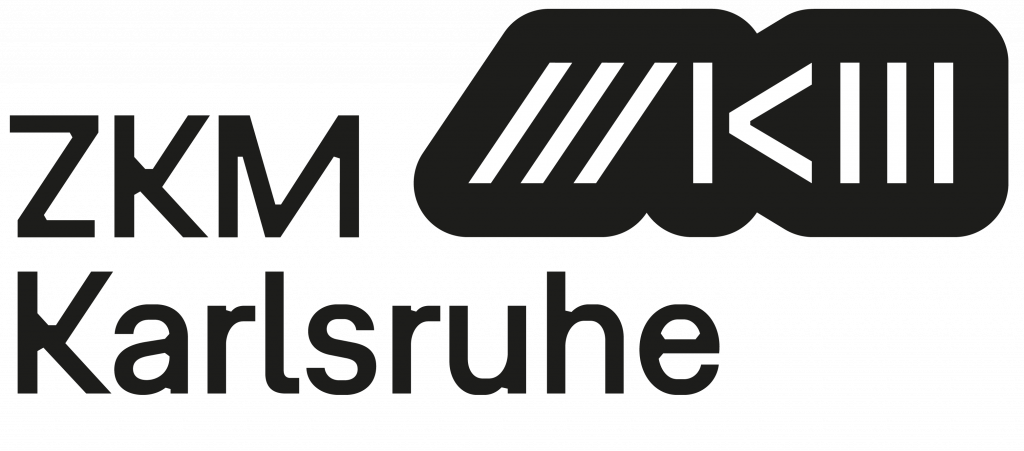Institute Heinrich Heidersberger and Vernissage “Code – Kunst – Konstruktionen”
Due to limited capacity: bus trip for invited guests of honor only – further participants only with individual travel to the opening of the exhibition


Departure time from Berlin: 8:30 Motel One – Berlin to Wolfsburg Castle
Visiting the Institute Heidersberger in Wolfsburg Castle
(guest of honor only – due to limited capaxity)
On the occasion of the “Generative Art Summit” at the Akademie der Künste in Berlin, a day tour program to Wolfsburg is offered for the guests of honor are invited, other participants only on request. The trip includes the visit of Wolfsburg Castle and the Institut Heidersberger, the event partner of the summit. Heinrich Heidersberger’s son Benjamin, founder and CEO oft he institute and Bernd Rodrian, its director, will present Heinrich‘s rhythmograms: a sculptural apparatus with what the artist used to create his generative images. The institue was founded in 2002, is based in the artist’s former studio and is dedicated to the academic and artistic exploration of Heinrich Heidersberger’s life’s work. It develops ideas and concepts for contemporary artistic projects that take up and continue aspects of Heinrich Heidersberger’s complex oeuvre. In addition, exhibitions of the individual areas of Heinrich Heidersberger’s work are curated within the institute.
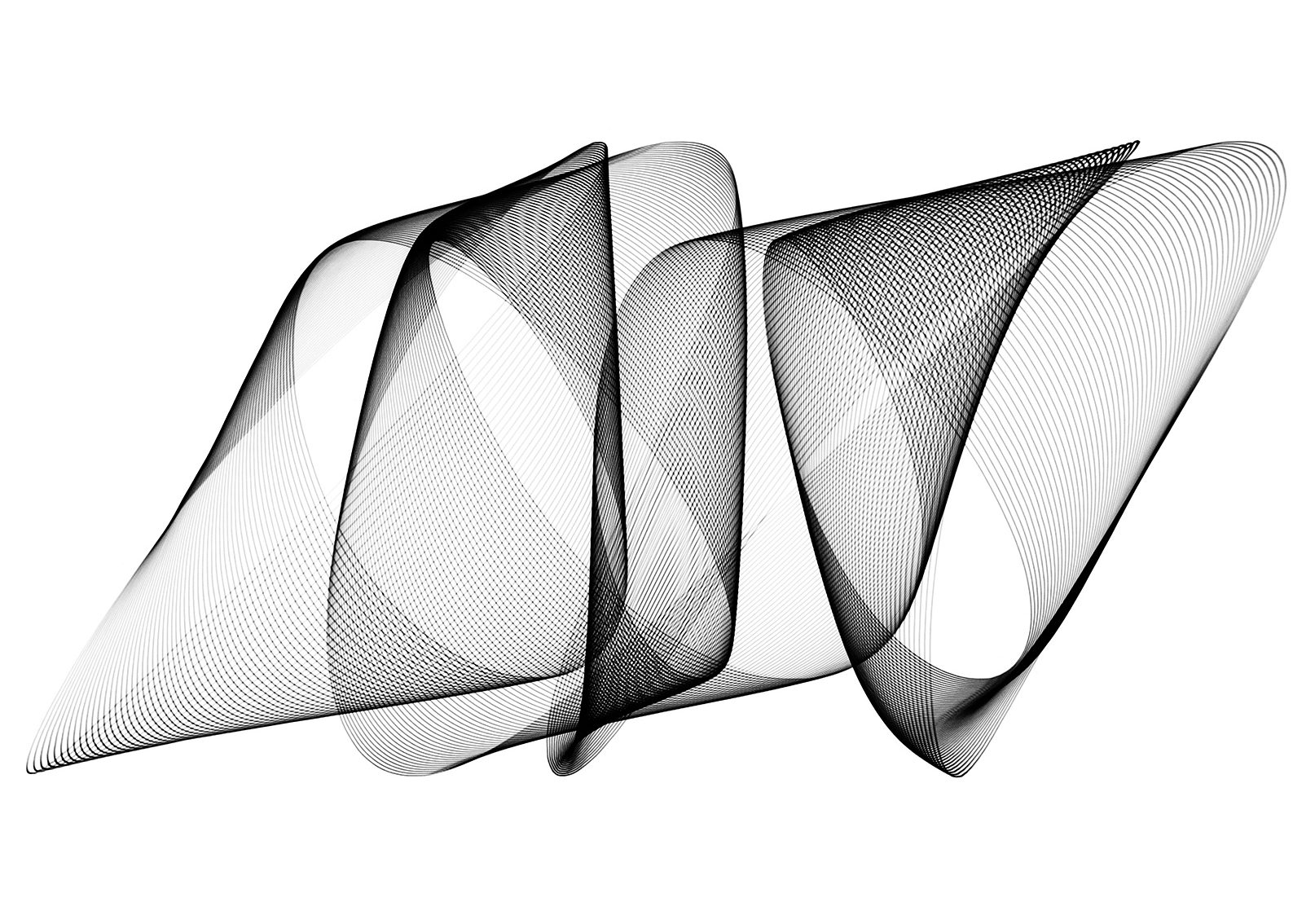

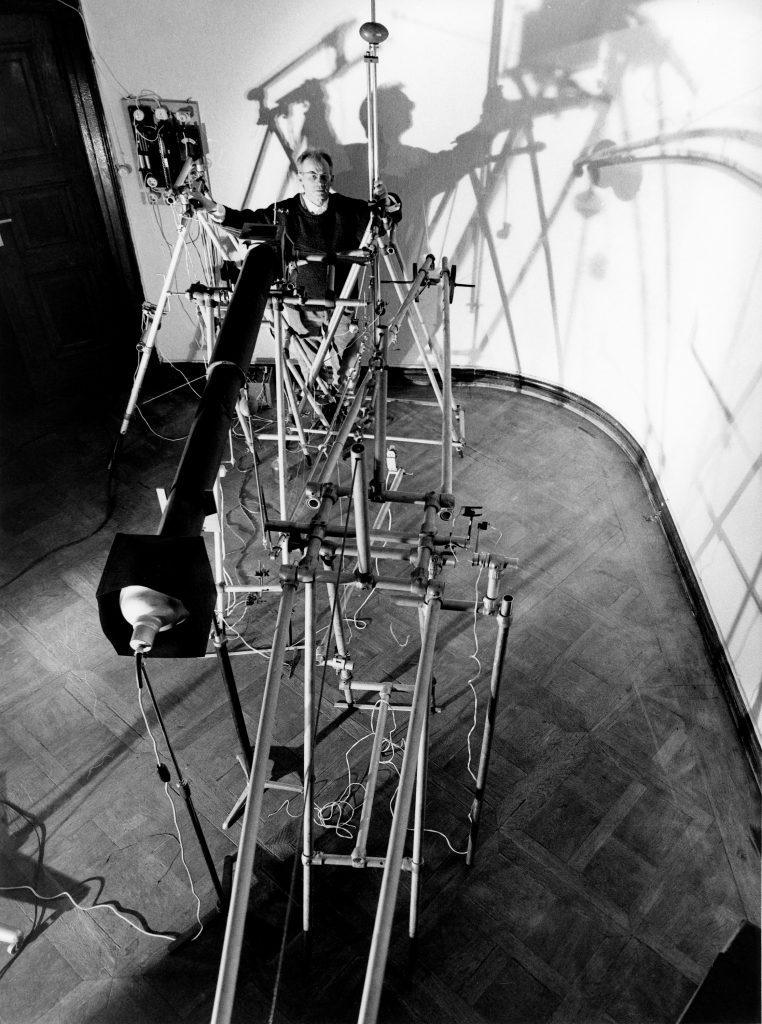

At the same time as Heidersberger, Oskar Kreisel and Peter Keetman created photographic images with experimental techniques and pendulum oscillations. But Heidersberger was able to cheat chance with the help of the rhythmograph’s large-scale apparatus: once set in motion, this photographic drawing machine uses long exposure times to create extremely complex images of light tracings. The dynamic vibrations it captures yield two-dimensional objects with three-dimensional effects.
About Heinrich Heidersberger
Heinrich Heidersberger was born in 1906 in Ingolstadt where his father was serving as a major of a cavalry regiment. Later the family moved back to Linz, Austria, where Heidersberger finished high school and started to study architecture in Graz. In 1928 he moved to Paris until 1931 to study painting with Fernand Léger and eventually switched to photography. Stations in Holland and Denmark followed. In 1936 he moved to Berlin to avoid losing his citizenship and got his first job from architect Herbert Rimpl to document the Heinkel airplane factory in Oranienburg. Rimpl also employed him as the head of the photographic department at the Reichswerke Hermann Goering in Salzgitter-Lebenstedt where he survived the war.
Heidersberger relocated to Braunschweig where he was a translator and photographer for the British Army. In the upcoming “Wirtschaftswunder” (economic miracle) his main job was architecture photography but Heidersberger also experimented with microscopes, telescopes, projectors and machines in different photographic techniques, constructing a lot of the equipment himself. Among this was the huge 4-pendulum-machine for the Lissajous-Figures he developed between 1953 and 1965 and called them Rhythmograms.
In 1962 he was invited by the City of Wolfsburg to get a studio in the Castle, a place where he stayed until his death in 2006. He is considered one of the leading German architecture photographers after World War II. 2003 he was awarded the Honorary Citizenship for his cultural engagement.
3 pm – Vernissage “Code – Kunst- Konstruktionen” – the Foundation’s Collection Franke & Friends (public access)
After lunch the guests are invited to attend the preview of the exhibition “Code – Art – Constructions. On the History of Generative Art”, which will take place at another partner of the event, the Städtische Galerie Wolfsburg, curated by Susanne Paech, Marcus Koerber and Bernd Rodrian. All artworks shown are part of the „Franke & Friends” foundation collection. The exhibition at the Städtische Galerie, which is also housed in Wolfsburg Castle, will focus on physical and digital works from the Tribute to Herbert W. Franke. This project was launched by the „art meets science – Herbert W. Franke Foundation“ shortly after the death of the pioneer of algorithmic art in 2022. Anika Meier and Susanne Paech had invited 80 artists to take part. Long-time companions of Herbert W. Franke donated physical works to the newly established foundation, and 60 of the world’s most important generative crypto artists created works in honor of their pioneer in which they reflected his thoughts or works. The artists donated part of the crypto proceeds to the foundation for a digitization project at the ZKM and for computer science lessons at schools in Namibia.
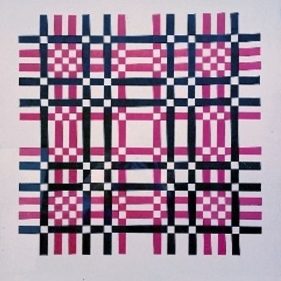

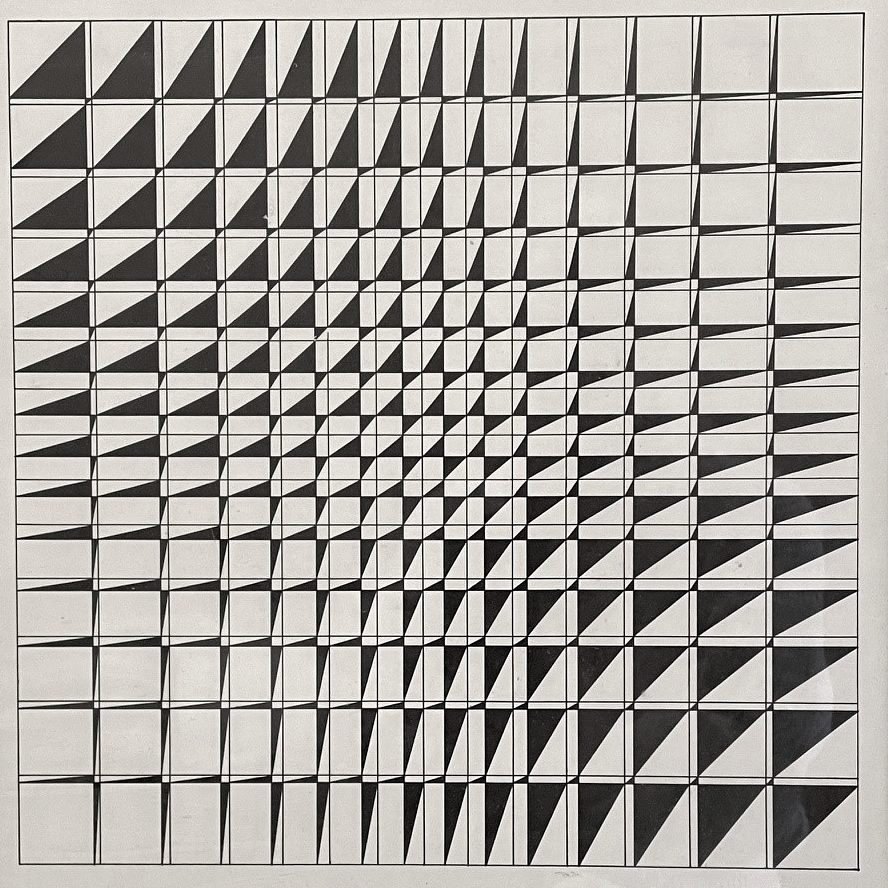



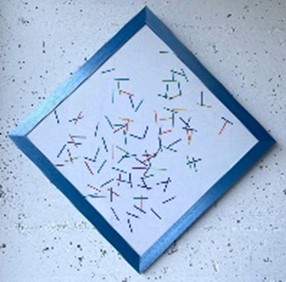

The exhibition‘s tribute works are complemented by other works that originally come from the private collection of Herbert W. Franke and Susanne Paech, but have now also been incorporated into the “Franke & Friends” foundation collection. It follows Franke’s much-publicized concept of “generative visual art”. For Franke, it did not matter whether such works would be classified as Op Art, generative photography or computer art. However, the artists all created their works on the basis of rational considerations and algorithmic methods, mostly also using technical aids ranging from cameras to computers. The works are also often based on different types of research – on perception or light, for example. Franke and his wife built up a private collection of these works of which a large part became the property of the Kunsthalle Bremen in 2007. From the 1950s onwards Franke built up a worldwide network of these generative companions, remained in contact with them throughout his life and referred to them as “my friends”, artists who pursued a similar artistic concept of rational art observation and design to his own. The foundation thus named its growing collection “Franke & Friends”.
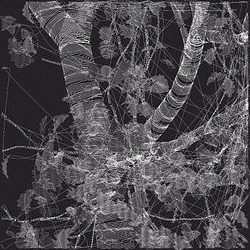

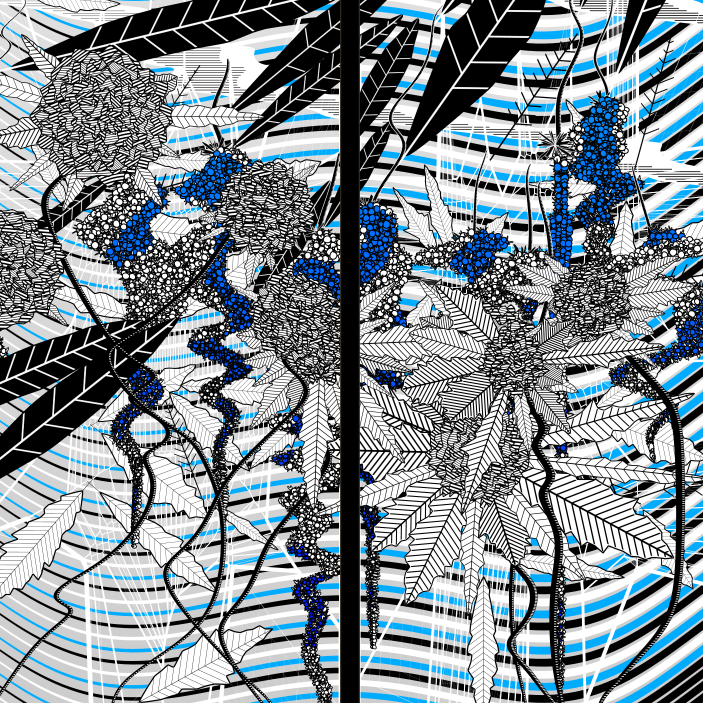



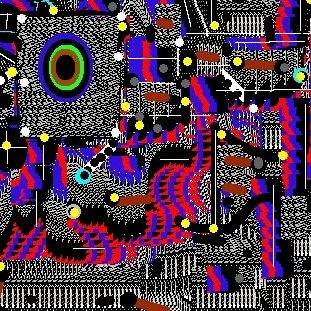

Marcus Koerber, Director of the Staedtische Galerie Wolfsburg: “I am delighted that we are able to show the exhibition in our Museum of Contemporary Art. It fits one hundred percent into our museum profile and our future orientation. And that for two reasons: Firstly, we are working intensively with our partners on the issue of dealing with artistic estates and, with the estate of Heinrich Heidersberger in Wolfsburg Castle and the Malte Sartorius Artists’ Foundation, we have two large private art estates in our museum. Therefore we have a direct interface with this foundation project. Secondly, we also integrated works of art that use algorithms and AI into the collection, such as works by Prof. Andreas Greiner.”
Participating Artists
Kevin Abosh, Agoria, A-Mashino, Kim Asendorf, Justin Aversano, Bajiru, Loren Bednar, Ryan Bell, Christian Bök, Ana Caballero, Jonathan Chomko, Stefano Contiero, Sofia Crespo, Sterling Crispin, CryptoWiener, Jeff Davis, Geoff Davis, Deafbeef, Eric De Giuly, Hans Dehlinger, Harm van den Dorpel, Eko33, Fingacode, Herbert W. Franke, Thomas Franke, Julien Gachadoat, John Gerrard, Gin, Manfred Gräf, Alexander Grasser, Heinrich Gravenhorst, Andreas Gysin, Benjamin Heidersberger, Heinrich Heidersberger, Karl-Martin Holzhäuser, Kurt Ingerl, iRyanBell, Gottfried Jäger, Aleksandra Jovanic, Mario Klingemann, Edgar Knoop, Bill Kolomyjec, Torsten Kresse, Lammetje, Jan Robert Leegte, Lawrence Lek, Josef Linschinger, Anna Lucia, Jonas Lund, Frank Malina, Maya Man, Tim Maxwell, Anika Meier, Tomislav Mikulic, Vera Molnar, Lee Mullican, Frieder Nake, Operator, P1xelboy, Susanne Paech, Pierre Pauze, Aaron Penne, Phlins, Paul Prudence, Casey Reas, Sarah Ridgley, Rafaël Rozendaal, Manuel Rossner, Eugen Roth, Sylvia Roubaud, Rudxane, Helena Sarin, Mechthild Schmidt-Feist, Reiner Schneeberger, Marcel Schwittlick, Clifford Singer, Travess Smalley, smldms, Snofrow, Sam Solooki, Marcelo Soria-Rodriguez, Christa Sommerer/Laurant Mignonneau, Anne Spalter, Michael T. Stephens, Sasha Stiles, Ivona Tao, Sam Tsao, Tracy Turn, Iskra Velitchkova, Harry Yeff&Trung Bao, Hajo Welke, Emily Xie, Yazid, Zancan.
Public access to the Vernissage “Kunst – Code – Kunstruktionen” in Städtische Galerie Wolfsburg at 3 pm, trip by train must be organized individually.
Event-Partners
